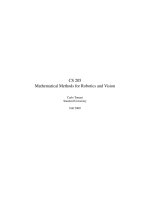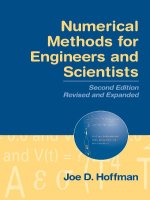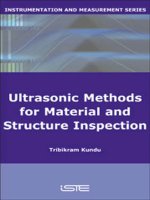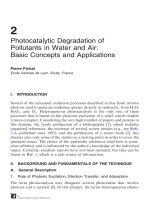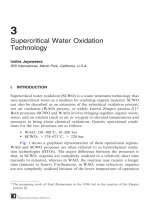formal methods for components and objects 9th international symposium, fmco 2010, graz, austria, november 29-december 1, 2010 revised papers
Bạn đang xem bản rút gọn của tài liệu. Xem và tải ngay bản đầy đủ của tài liệu tại đây (5.01 MB, 406 trang )
Lecture Notes in Computer Science 6957
Commenced Publication in 1973
Founding and Former Series Editors:
Gerhard Goos, Juris Hartmanis, and Jan van Leeuwen
Editorial Board
David Hutchison
Lancaster University, UK
Takeo Kanade
Carnegie Mellon University, Pittsburgh, PA, USA
Josef Kittler
University of Surrey, Guildford, UK
Jon M. Kleinberg
Cornell University, Ithaca, NY, USA
Alfred Kobsa
University of California, Irvine, CA, USA
Friedemann Mattern
ETH Zurich, Switzerland
John C. Mitchell
Stanford University, CA, USA
Moni Naor
Weizmann Institute of Science, Rehovot, Israel
Oscar Nierstrasz
University of Bern, Switzerland
C. Pandu Rangan
Indian Institute of Technology, Madras, India
Bernhard Steffen
TU Dortmund University, Germany
Madhu Sudan
Microsoft Research, Cambridge, MA, USA
Demetri Terzopoulos
University of California, Los Angeles, CA, USA
Doug Tygar
University of California, Berkeley, CA, USA
Gerhard Weikum
Max Planck Institute for Informatics, Saarbruecken, Germany
Marcello M. Bonsangue (Eds.)
Formal Methods
for Components
and Objects
9th International Symposium, FMCO 2010
Graz, Austria, November 29 - December 1, 2010
Revised Papers
13
Volume Editors
Bernhard K. Aichernig
Graz University of Technology
Institute for Software Technology
Inffeldgasse 16b
8010 Graz, Austria
E-mail:
Frank S. de Boer
Centre for Mathematics and Computer Science, CWI
Science Park 123
1098 XG Amsterdam, The Netherlands
E-mail:
Marcello M. Bonsangue
Leiden University
Leiden Institute of Advanced Computer Science
P.O. Box 9512
2300 RA Leiden, The Netherlands
E-mail:
ISSN 0302-9743 e-ISSN 1611-3349
ISBN 978-3-642-25270-9 e-ISBN 978-3-642-25271-6
DOI 10.1007/978-3-642-25271-6
Springer Heidelberg Dordrecht London New York
Library of Congress Control Number:
CR Subject Classification (1998): D.2.4, D.2, D.3, F.3, D.1
LNCS Sublibrary: SL 2 – Programming and Software Engineering
© Springer-Verlag Berlin Heidelberg 2011
This work is subject to copyright. All rights are reserved, whether the whole or part of the material is
concerned, specifically the rights of translation, reprinting, re-use of illustrations, recitation, broadcasting,
reproduction on microfilms or in any other way, and storage in data banks. Duplication of this publication
or parts thereof is permitted only under the provisions of the German Copyright Law of September 9, 1965,
in its current version, and permission for use must always be obtained from Springer. Violations are liable
to prosecution under the German Copyright Law.
The use of general descriptive names, registered names, trademarks, etc. in this publication does not imply,
even in the absence of a specific statement, that such names are exempt from the relevant protective laws
and regulations and therefore free for general use.
Typesetting: Camera-ready by author, data conversion by Scientific Publishing Services, Chennai, India
Printed on acid-free paper
Springer is part of Springer Science+Business Media (www.springer.com)
Preface
Large and complex software systems provide the necessary infrastructure in all
industries today. In order to construct such large systems in a systematic manner,
the focus in development methodologies has switched in the last two decades from
functional issues to structural issues: both data and functions are encapsulated
into software units which are integrated into large systems by means of various
techniques supporting reusability and modifiability. This encapsulation principle
is essential to both the object-oriented and the more recent component-based
software engineering paradigms.
Formal methods have been applied successfully to the verification of medium-
sized programs in protocol and hardware design. However, their application to
the development of large systems requires more emphasis on specification, mod-
eling and validation techniques supporting the concepts of reusability and mod-
ifiability, and their implementation in new extensions of existing programming
languages like Java.
The 9th Symposium on Formal Methods for Components and Objects (FMCO
2010) was held in Graz, Austria, from November 29 to December 1, 2010. The
venue was Hotel Weitzer. FMCO 2010 was realized as a concertation meeting
of European projects focussing on formal methods for components and objects.
This volume contains 20 revised papers submitted after the symposium by the
speakers of each of the following European projects involved in the organization
of the program:
– The FP7-IST project AVANTSSAR on automated validation of trust and
security of service-oriented architectures. The contact person is Luca Vigan`o
(University of Verona, Italy).
– The FP7-IST project DEPLOY on industrial deployment of advanced system
engineering methods for high productivity and dependability. The contact
person is Alexander Romanovsky (Newcastle University, UK).
– The ESF-COST Action IC0701 on formal verification of object-oriented soft-
ware. The contact person is Bernhard Beckert (Karlsruhe Institute of Tech-
nology, Germany).
– The FP7-IST project HATS on highly adaptable and trustworthy software
using formal models. The contact person is Reiner H¨ahnle (Chalmers Uni-
versity of Technology, Sweden).
– The FP7-SST project INESS on an integrated European railway signaling
system. The contact person for work relating to FMCO is Jim Woodcock
(University of York, UK).
– The FP7-IST project MADES on a model-driven approach to improve the
current practice in the development of embedded systems. The contact per-
son is Alessandra Bagnato (TXT e-solutions, Italy).
VI Preface
– The FP7-IST project MOGENTES on model-based generation of tests for
dependable embedded systems. The contact person for work relating to
FMCO is Bernhard Aichernig (Graz University of Technology, Austria).
– The FP7-IST project MULTIFORM on integrated multi-formalism tool sup-
port for the design of networked embedded control systems. The contact
person for work relating to FMCO is Christian Sonntag (TU Dortmund,
Germany).
– The FP7-IST project QUASIMODO on quantitative system properties in
model-driven design of embedded systems. The contact person is Kim G.
Larsen (Aalborg University, Denmark).
The proceedings of the previous editions of FMCO have been published as vol-
umes 2852, 3188, 3657, 4111, 4709, 5382, 5751, and 6286 of Springer’s Lecture
Notes in Computer Science. We believe that these proceedings provide a unique
combination of ideas on software engineering and formal methods which reflect
the expanding body of knowledge on modern software systems.
Finally, we thank all authors for the high quality of their contributions, and
the reviewers for their help in improving the papers for this volume.
July 2011 Bernhard K. Aichernig
Frank de Bo er
Marcello Bonsangue
Organization
FMCO 2010 was organized by the Institute for Software Technology, Graz Uni-
versity of Technology, Austria, in collaboration with the Centrum voor Wiskunde
en Informatica (CWI), Amsterdam, and the Leiden Institute of Advanced Com-
puter Science, Leiden University, The Netherlands.
Program Organizer
Bernhard K. Aichernig Graz University of Technology, Austria
Steering Committee
Frank de Boer CWI and Leiden University, The Netherlands
Marcello Bonsangue Leiden University, The Netherlands
Stefan Hallerstede University of D¨usseldorf, Germany
Michael Leuschel University of D¨usseldorf, Germany
Eric Madelaine INRIA M´edit´erann´ee, France
Local Organization at Graz University of Technology
Bernhard K. Aichernig (Chair)
Harald Brandl
Arabella Gaß
Elisabeth J¨obstl
Petra Pichler
Herbert P¨ockl
Stefan Tiran
Benedict Wright
Sponsoring Institutions
European FP7 project MOGENTES
Graz University of Technology
Graz Convention Bureau
Th e AVAN TS SAR Pr o je ct
ASLan++ — A Formal Security Specification Language for Distributed
Systems 1
David von Oheimb and Sebastian M¨odersheim
Orchestration under Security Constraints 23
Yannick Chevalier, Mohamed Anis Mekki, and Micha¨el Rusinowitch
Customizing Protocol Specifications for Detecting Resource Exhaustion
and Guessing Attacks 45
Bogdan Groza and Marius Minea
The ESF Cost Action IC0701
Improving the Usability of Specification Languages and Methods for
Annotation-Based Verification 61
Bernhard Beckert, Thorsten Bormer, and Vladimir Klebanov
Program Specialization via a Software Verification Tool 80
Richard Bubel, Reiner H¨ahnle, and Ran Ji
The DEPLOY Project
Model–Based Analysis Tools for Component Synthesis 102
Luigia Petre, Kaisa Sere, and Leonidas Tsiopoulos
Shared Event Composition/Decomposition in Event-B 122
Renato Silva and Michael Butler
The HATS P roject
ABS: A Core Language for Abstract Behavioral Specification 142
Einar Broch Johnsen, Reiner H¨ahnle, Jan Sch¨afer,
Rudolf Schlatte, and Martin Steffen
A Component Model for the ABS Language 165
Micha¨el Lienhardt, Ivan Lanese, Mario Bravetti, Davide Sangiorgi,
Gianluigi Zavattaro, Yannick Welsch, Jan Sch¨afer, and
Arnd Poetzsch-Heffter
X Table of Contents
Compositional Algorithmic Verification of Software Product Lines 184
Ina Schaefer, Dilian Gurov, and Siavash Soleimanifard
Variability Modelling in the ABS Language 204
Dave Clarke, Radu Muschevici, Jos´eProen¸ca, Ina Schaefer, and
Rudolf Schlatte
The INESS Project
Automated Verification of Executable UML Models 225
Helle Hvid Hansen, Jeroen Ketema, Bas Luttik,
MohammadReza Mousavi, Jaco van de Pol, and
Osmar Marchi dos Santos
Verification of UML Models by Translation to UML-B 251
Colin Snook, Vitaly Savicks, and Michael Butler
The MADES Project
Towards the UML-Based Formal Verification of Timed Systems 267
Luciano Baresi, Angelo Morzenti, Alfredo Motta, and Matteo Rossi
The MOGENTES Project
Generic Fault Modelling for Fault Injection 287
Rickard Svenningsson, Henrik Eriksson, Jonny Vinter, and
Martin T¨orngren
Tightening Test Coverage Metrics: A Case Study in Equivalence
Checking Using k-Induction 297
Alastair F. Donaldson, Nannan He, Daniel Kroening, and
Philipp R¨ummer
The MULTIFORM Project
The Hierarchical Compositional Interchange Format 316
Damian Nadales Agut, Bert van Beek, Harsh Beohar,
Pieter Cuijpers, and Jasper Fonteijn
Application of Model-Checking Technology to Controller Synthesis 336
Alexandre David, Jacob Deleuran Grunnet, Jan Jakob Jessen,
Kim Guldstrand Larsen, and Jacob Illum Rasmussen
Table of Contents XI
The QUASIMODO Project
Testing Real-Time Systems under Uncertainty 352
Alexandre David, Kim Guldstrand Larsen, Shuhao Li,
Marius Mikucionis, and Brian Nielsen
Model-Checking and Simulation for Stochastic Timed Systems 372
Arnd Hartmanns
Author Index 393
ASLan++ — A Formal Security Specification
Language for Distributed Systems
David von Oheimb
1
and Sebastian M¨odersheim
2
1
Siemens Corporate Technology, IT Security, Munich, Germany
, ddvo.net
2
DTU Informatics, Technical University of Denmark, Lyngby, Denmark
, imm.dtu.dk/
~
samo
Abstract. This paper introduces ASLan++, the AVANTSSAR Specifi-
cation Language. ASLan++ has been designed for formally specifying dy-
namically composed security-sensitive web services and service-oriented
architectures, their associated security policies, as well as their security
properties, at both communication and application level.
We introduce the main concepts of ASLan++ at a small but very in-
structive running example, abstracted form a company intranet scenario,
that features non-linear and inter-dependent workflows, communication
security at different abstraction levels including an explicit credentials-
based authentication mechanism, dynamic access control policies, and
the related security goals. This demonstrates the flexibility and expres-
siveness of the language, and that the resulting models are logically ad-
equate, while on the other hand they are clear to read and feasible to
construct for system designers who are not experts in formal methods.
Keywords: services, security, specification language, formal analysis.
1 Introduction
Formal Security Analysis. Security in distributed systems such as web ser-
vices and SOA is very difficult to achieve, because often the security problems
are very subtle. Even systems that are simple to describe (such as the famous
three-line Needham-Schroeder Public Key protocol) may have weaknesses that
go unnoticed for years even when the system has been carefully studied [9].
Formal specification and verification of such systems can help to uncover weak-
nesses before they can be actually exploited. Especially automated verification
tools can help to find the needle in the haystack — one trace of the system
that violates the security goals among an enormous number of traces that are
fine.
Over the last decade, formal verification for security has made a lot of progress.
In the late 90s, automated protocol verification tools began to emerge that fo-
cussed on simple security protocols that can be described by an exchange of
messages (e.g., in Alice&Bob-style notation). Despite being small systems, their
verification is very challenging, in particular considering that an intruder has an
B.K. Aichernig, F.S. de Boer, and M.M. Bonsange (Eds.): FMCO 2010, LNCS 6957, pp. 1–22, 2011.
c
Springer-Verlag Berlin Heidelberg 2011
2 D. von Oheimb and S. M¨odersheim
unbounded choice in constructing messages, which may involve algebraic prop-
erties of the cryptographic primitives. Moreover one cannot give a bound on
the number of sessions that can be executed in parallel. These problems are
now well understood, both theoretically in terms of complexity and decidabil-
ity [21,12,15], and in terms of methods and tools that are practically feasible
automated verification [8,1,13,16].
Limitations of Security Protocol Analysis. The focus of simple security
protocols is however quite limited, ignoring a lot of aspects that play a crucial
role in distributed systems and that often are relevant for security.
The first very common aspect that falls out of the simple structure of security
protocols is non-linear communication. For instance, a (web-) server typically
listens for requests that must be in one of several types of formats; depending on
the request, the server will start an appropriate workflow, possibly contacting
other servers that implement subtasks of the workflow, and then finally give a
response to client who sent the initial request.
This brings us immediately to a second aspect: the described transaction may
sometimes not be independent from all other transactions, but for instance may
be related via dynamic distributed state. For instance, in case of an online shop,
a database maintained by the server may contain the set of all processed orders
and their status, the set of all registered customers, and other related informa-
tion. Processing different requests may depend on this database, for instance a
registered user can send a request to see all her recent orders — provided the
user can authenticate herself by username and password or maybe by a cookie.
Another subsequent request could then be to cancel or change an order that has
not yet been shipped. These aspects are completely outside the realm of simple
security protocols where different sessions are essentially independent and the
only information shared between different sessions are static long-term keys.
A third important aspect concerns the relation to dynamic security policies.
For example, when a server receives a request from a client to access a resource
it controls, it may need to check whether the particular client has the necessary
access rights. These access rights may not be static but may for instance depend
on who is a member of the group that owns a particular resource, and these
memberships may change over the time. The change of group memberships may
itself be transactions of the system that is again governed by some access control
policies, e.g., only members of a certain role, say manager, are authorized to
change group memberships.
AVANTSSAR and Its Specification Language. The EU-funded Project
AVANTSSAR has been concerned with developing a formal specification lan-
guage and automated verification methods and tools to handle systems at de-
sign level in which all these three aspects are relevant: non-linear work-flow,
relationships between workflows (for instance via databases), and access control
policies. In this paper, we describe the AVANTSSAR Specification Language
A Formal Security Specification Language for Distributed Systems 3
ASLan++ [4], which has been developed as a joint effort by the partners of the
project. The design goal of ASLan++ were
1. expressiveness sufficient to describe the security-relevant aspects of service-
oriented architectures as described above,
2. ease of use for systems designers, in particular being close to the way design-
ers think about and describe such systems, allowing to abstract from details
whenever they are not relevant or can be “factored out”,
3. compatibility with existing and emerging verification methods so that au-
tomatically analyzing specifications is feasible at least for small number of
parallel processes, without being biased to a particular method.
Structure of This Paper. In this paper, we discuss the main concepts of
ASLan++ and how they can be used for modeling the most relevant aspects of
service-oriented architectures. We also briefly discuss the rationale behind some
design decisions and some consequences for the verification methods, drawing in
particular from our experience in modeling a number of larger case studies.
For introducing ASLan++, we employ a small but very instructive running
example specification. Its full text may be found in the appendix, while in the fol-
lowing sections we describe it piece-by-piece, progressing from basic structuring
of the specification over its procedural aspects to security policies, communica-
tion properties, and security goals.
The example describes part of a company intranet scenario. Employees may
access files according to a dynamic access control policy. A central server keeps
track of the access rights. Both managers and employees can influence the
policy.
2 Specification Structure and Execution
2.1 Specifications
An ASLan++ specification of a system and its security goals consists of a hi-
erarchy of entities. An entity may import other entities contained in separate
files, which in turn contain a hierarchy of entity declarations. The top-level en-
tity, usually called Environment, serves as the global root of the system being
specified, similarly to the “main” procedure of a program. In our example spec-
ification, the Environment has two sub-entities: Session and Employee,where
the former has in turn two sub-entities: Server and Manager.TheManager en-
tity, for example, is used to describe the behavior of any honest manager as well
as the security requirements that can be stated from her perspective.
2.2 Entities and Agents
Entities are the major ASLan++ building blocks, which are similar to classes in
Java or roles in HLPSL [10] and other security protocol specification languages.
Entities are a collection of declarations and behavior descriptions. They can have
parameters and local variables, with the usual nested scoping w.r.t. sub-entities.
4 D. von Oheimb and S. M¨odersheim
Entities are like blueprints that can be instantiated to any number of processes
(or threads), each executing the body of the entity. With the exception of sets,
the parameters of an entity have call-by-value semantics: the entity obtains a
copy of the values and may change them without side-effects for the “calling”
process. On the other hand, one can easily model shared data [4, §2.4].
Each entity has an explicit or implicit formal parameter Actor,whichissim-
ilar to this or self in object-oriented programming languages. The value of
Actor is the name of the agent playing the role defined by the entity. This is
important for defining the security properties of the entity.
The entity and instance structure of our example is as follows, where entity
and variable names are uppercase, while constant and type names are lower-case.
ASLan++ comments start with a “%” symbol and extend until end of the line.
entity Environment {
entity Session (M, S: agent) {
entity Server (M, Actor: agent) {
}
entity Manager (Actor , S: agent ) {
}
body { % of Session
new Server (M,S);
new Manager (M,S);
}
}
entity Employee (Actor , S: agent ) {
}
body { % of Environment
any M. Session (M, centralServer);
new Employee (e1 ,centralServer);
new Employee (e2 ,centralServer);
}
}
There is (at least) one instance of entity Session, each invoked by a statement
any M. Session(M,centralServer) (described later). It has two formal pa-
rameters (of type agent): M refers to the agent playing the manager role, while
S holds the name of the server. Each session launches in parallel a thread of the
Server and a Manager instance, by statements like new Manager (M,S).The
session(s) runs in parallel with two (or more) Employee instances.
The Manager entity has two parameters: Actor is used to refer to herself, while
S holds the name of the server she is going to interact with. The parameters of
the Employee entity are analogous to Manager.
Instances of the Server entity will actually obtain the name of the manager
via the manager’s messages described below. Still, for the sake of relating entities
for the security goals, we need to give M, the variable that will hold the manager’s
agent name, as a formal parameter of Server. The other parameter of Server
is, as usual, the Actor.
A Formal Security Specification Language for Distributed Systems 5
Note that while each instance of Manager and Employee (typically) has a dif-
ferent agent playing the respective role, for example referred to by the constants
e1 and e2 used for employees, there is just a single constant centralServer used
as actor of the Server entity. This is how we model that the server is global.
2.3 Execution Model
The instantiation of an entity is in parallel: the caller starts a new process that
runs in parallel to the caller. A subtle point is the granularity at which paral-
lel processes can be interleaved. Consider that a web server may make quite a
number of intermediate computations between receiving a request and sending a
reply. Running in parallel with other processes (e.g., other instances of the same
server that currently serve a different request) produces an exponential number
of interleavings, which is difficult to handle for many verification methods. There
is also a number of classical problems attached, e.g., if we think of a two threads
of the server checking and modifying the database, this can easily lead to race
conditions. For ASLan++ we have chosen a particular way to deal with interleav-
ings. Whenever an entity receives a message and then acts upon that, we consider
its subsequent activity atomic up to the point where the entity goes back into
a state of waiting for further messages. The reason is quite pragmatic: we get a
coarse interleaving model that is feasible for verification tools without the user
having to code tool-related optimizations into the specification (i.e., declaring
atomicity-blocks to help the tools). At the same time, this can be regarded as a
reasonable model for many situations: when the server’s computation is related
to a shared resource, e.g., reading from a database and then writing a change
into the database, it is clear that in the implementation that process should
get a lock on the server so that other processes do not change the database in
between. ASLan++ thus allows to abstract from such locking mechanisms, and
in fact they are often not the focus of a security verification. However, if desired,
ASLan++ also allows to declare “custom breakpoints” (overriding the default
atomicity behavior) to model a finer interleaving model.
ASLan++ offers experimental support for constraints on the global system
run via LTL formulas, which may be used to specify e.g., fairness assumptions.
2.4 Dishonest Agents and the Intruder
The attacker is known as the intruder and can be referred to by the constant i
(of type agent). Yet we allow the intruder to have more than one “real name”.
1
To this end, we use the predicate dishonest that holds true of i and of every
pseudonym (i.e., alias name) A of i.
1
The intruder may have several names that he controls. This reflects a large number
of situations, like an honest agent who has been compromised and whose long-term
keys have been learned by the intruder, or when there are several dishonest agents
who collaborate. This worst case of a collaboration of all dishonest agents may be
simply modeled by one intruder who acts under different identities.
6 D. von Oheimb and S. M¨odersheim
As long as the actual value of the Actor parameterofanentityisanhonest
agent, the agent faithfully plays the role defined by the entity. If the Actor
parameter value is dishonest already on instantiation of the entity, which is
typically the case for some of the possibilities included in symbolic sessions (cf.
subsection 2.6), the body of the entity is ignored because the intruder behavior
subsumes all honest and dishonest behavior.
We also allow that an entity instance gets compromised later, that is, the
hitherto honest agent denoted by the Actor of the entity becomes dishonest.
Once an agent has become dishonest, for instance because it has been corrupted,
it can never become honest again.
2.5 Declarations
An entity may contain declarations of types, variables, constants, functions,
macros, (Horn) clauses, and algebraic equations.
Unless declared non-public, constants and functions are public, such that the
intruder knows them and thus may (ab-)use them. Moreover, function symbols
are by default interpreted in the free term algebra (modulo algebraic equations),
such that they are by default invertible in each argument. This conveniently
reflects the typical behavior of message constructors, like the ones declared in
our example:
login (agent , symmetric_key): message ;
changeGroup (agent , agent set, agent set): message ;
assignDeputy(agent ): message;
requestAccess(file ): message ;
grantedAccess(file ): message ;
deniedAccess(file ): message ;
where the types in parentheses specify their argument types.
Message constructors abstract from the actual implementation details of how
messages are actually encoded. Essentially the only property we rely on is their
invertibility, such that e.g., the intruder may obtain A, G1,andG2 from knowing
changeGroup(A,G1,G2). Since often a function application term is better read-
able when the first argument is written before the function symbol, ASLan++
offers syntactic sugar for this, such that we can equivalently write in “object-
oriented style”: A->changeGroup(G1,G2). The message constructors just men-
tioned, as well as the remaining symbols declared in the global symbols section,
will be described in more detail below where appropriate.
Types may have subtypes, e.g., the (built-in) relation agent < message means
that any value of type agent maybeusedinacontextwhereavalueoftype
message is expected. The type message includes all those values that may be sent
over the network, in particular concatenation M1.M2 and tuples (M1,M2) of sub-
messages M1 and M2. For “atomic” values in messages, one may use the subtype
text, which may be dealt with more efficiently during model-checking. For in-
stance, we declare an abstract type of files (or better: file identifiers) as
types
file < text ;
A Formal Security Specification Language for Distributed Systems 7
Sets, which are passed by reference, are not a subtype of message, such that
they cannot be directly sent as messages.
2
Sets and tuples have parameters for
their element types, e.g., nat set and agent * message).
Symbols may also be declared in the respective sections of the various entities,
in particular the local variables that their instances use internally. For instance,
both Manager and Server declare
symbols
Cookie : cookie;
where cookie is a subtype of text.
2.6 Statements
Statements may be the usual assignments, branches and loops, but also non-
deterministic selections, assertions, generation of fresh values and of new entity
instances, transmission of messages (i.e., send and receive operations), and in-
troduction or retraction of facts, which represent state-dependent truth values.
The select statement is typically used withinthemainloopofaserver,as
it is the case in our example for the Server entity:
body {
while (true ) {
select {
on ( & ): {
}
on (?A *->* Actor : requestAccess(?F)): {
}
}
}
}
Such a statement handles a variety of potential incoming requests or other events
such as timeouts. It checks the guards given, blocking as long as no guard is
fulfilled, then nondeterministically chooses any one of the fulfilled guards and
executes the corresponding statement block. The evaluation of the chosen guard
assign variables that are written with the ? symbol before their name. For in-
stance, the guard
on (?A *->* Actor: requestAccess(?F)): { }
(where in this context the decorated arrow symbol *->* denotes a communi-
cation channel with certain properties, as we will describe in section 4) can fire
when a requestAccess message has been received from any authenticated agent
A for any file F. When this guard is chosen, the values of these two variables are
set according to the actual values received. Then in response the compound
statement enclosed by the brackets { } is executed.
Entity generation, introduced by the keyword new or any, instantiates sub-
entities. This is only allowed for direct sub-entities, such that static and dynamic
2
In [4, §2.5], we describe several possibilities to communicate sets.
8 D. von Oheimb and S. M¨odersheim
scoping coincide. In our example, the Session entity creates new instances of
the server and the Manager entity:
new Server (M,S);
new Manager (M,S);
These run in parallel and in this case happen to obtain on creation the same
actual parameter values, M and S.
Symbolic entity generations, introduced by any, are a convenient shorthand
for loosely instantiating an entity, in the following sense: the bound parameters
of the entity, as indicated by the given list of variables, allows to explore all
possible values, from the domain of their type (which may be any subtype of
message). An optional guard, which may refer to the variables listed, constrains
the selection. This mechanism is typically used to produce so-called symbolic
sessions, where the bound variables range over type agent, such that (unless
further constraints exist) their values include i, the name of the intruder.
In our example, we symbolically instantiate the Session entity by
any M. Session (M, centralServer);
Note that since we did not constrain the agent value for M,itmaybeinfactthe
intruder. The model checkers will use this freedom to look for attacks for both
honest and dishonest instantiations for M.
2.7 Terms
Terms may contain variables (e.g., A), constants (e.g., e1), and function appli-
cations (to be more precise: function symbols applied to first-order terms, e.g.,
requestAccess(F)) including infix right-associative message concatenation, e.g
M1.M2) and tupeling (e.g., (A,b2,0)). Set literals are written as usual (e.g.,
{A,B,C}), while the basic operator on sets is the contains function, where the
presence of the fact Set->contains(X) means that X is a member of Set.
3 Policies and Transitions
ASLan++ provides an extremely powerful way to specify security policies and
their interaction with the dynamic system defined by the entities given in the
specification. For simplicity, let us refer to the latter system in the following
simply as the transition system. Policies are specified by a set of Horn clauses,
e.g., stating that a person can get access to some resource if certain conditions
are met. In our running example, there are only two such rules:
clauses
accessDirect(A,G,F): A->canAccess(F) :- G->isOwner (F) & G-> contains (A);
accessDeputy(A,B,F): A->canAccess(F) :- A->deputyOf (B) & B-> canAccess(F);
These rules make use of the following user-declared predicate symbols:
canAccess(agent ,file ): fact;
isOwner ( agent set ,file ): fact;
deputyOf ( agent ,agent ): fact;
A Formal Security Specification Language for Distributed Systems 9
3.1 Predicates and Facts
Instead of the usual type bool for truth values, ASLan++ uses the type fact.
Terms denoting atomic propositions, generally knows as predicates, are repre-
sented by functions with result type fact. The question whether an atomic
proposition holds or not is expressed by the (non-)existence the respective pred-
icate term in a global “fact space”. Facts may be combined with the usual logical
operators in LTL formulas to express goals, and they are also used in conditions
(in if, while,andselect statements) known as guards.
By default a fact does not hold, but it may be explicitly introduced (simply
by writing it as an ASLan++ statement) and retracted. The constant true is
introduced automatically, while the constant false is never introduced. Facts
may also be generated by Horn clauses, as described next.
3.2 Horn Clauses
The first above rule says that an agent A can access a file F if A is a member
of a group G that is the owner of F . The second rule says that A can access
file F if A is a deputy of another agent B who has access to F .Notethatit
is only for the sake of simplicity of the example that this latter rule models a
“complete delegation” of all access rights while most real systems would make
more fine-grained delegations.
The symbols A, B, G, F are variables that can be instantiated with arbitrary
values and hence are regarded as “parameters” of the rules; this allows in the
output of (attack) traces to clearly announce which rule with which values of the
parameters had been applied. Note that the second rule is “recursive”: if A is
the deputy of B and B is the deputy of C,thenA also gets access to everything
that C has access to — and such a line of deputies can be extended ad libitum,
implying delegation of access rights along this line.
It is important to see that these rules are positive formulations of access con-
trol conditions: A gets access to a file F if and only if there is some way to derive
A->canAccess(F) with the Horn clauses. We do not allow negative formulations
such as “A does not get access if . . . ”. This has the advantage that ASLan++
policies can never be inconsistent in the sense that one rule allows access while
another one would deny it. The price that we pay for this is that it is harder
in ASLan++ to formulate a higher-level policy that overrides the judgements of
a lower level policies; we discuss this below. Observe that by allowing arbitrary
definite first-order logic Horn clauses, this alone gives a Turing-complete pro-
gramming language (namely a subset of Prolog).
3
This expressivity implies that
derivability in ASLan++ policies is in general undecidable. There are several
ways to restrict this concept to decidable fragments, e.g., allowing only primi-
tive recursion. It was part of the language design of ASLan++ not to commit
to such a particular restricted fragment, which may be specific to a verification
3
There is even some (experimental, so far) support for (in-)equalities as side conditions
on the right-hand side of clauses.
10 D. von Oheimb and S. M¨odersheim
method. Our method thereby allows to formulate policies in very different ways,
e.g., SecPAL and DKAL policies [6,18] can be specified.
It is crucial to first distinguish two kinds of facts, namely the state facts:
those explicitly introduced by the transition system, and policy facts:thosemore
implicitly “generated” by Horn clauses. In our example, canAccess is the only
policy fact, because it is the only fact that can be produced by the policy rules.
All the other facts are state facts. We will come back why we must insist on this
distinction.
3.3 Policy Interaction
There are now two ways how the policies can interact with the transition system
that we describe by the ASLan++ entity specifications and their instantiations.
First, transitions of an entity can depend on the judgement of policies. For our
example, consider the transaction where an authenticated user requests access
to a file: the server governing file access should first check whether the policy
actually allows this user access to the requested file. Here is the code snippet of
the server’s behavior (thus Actor is centralServer here):
on (?A *->* Actor : requestAccess(?F)): {
if (A-> canAccess(F))
Actor *->* A: grantedAccess(F);
else
Actor *->* A: deniedAccess(F);
}
The response of the server, either grantedAccess(F) or deniedAccess(F),de-
pends on whether A->canAccess(F) holds, which is determined by the two Horn
clauses as explained above.
The second way that policies can interact with the transition system is just
the other way around: the transition system can generate and retract state facts
on which the Horn clauses depend. For instance, there can be transitions that
change who is the owner of a file, or who is member of which group or who is
deputy of whom, and this has an immediate effect on the access rights via the
rules. In our example, let us consider that a manager M can tell the server that
a certain employee A changes from a group G
1
to a group G
2
, so that the server
updates the group membership information. Here is the code snippet from the
point of view of the server (i.e., Actor):
on (M *->* Actor : (?A->changeGroup(?G1,?G2)) & ?G1-> contains (?A )): {
retract (G1 ->contains (A));
G2-> contains (A );
}
Like with the messages sent by an employee, here the manager’s command is
transmitted on a secure channel (including authentication of the manager), and
again the command is abstracted into the message constructor changeGroup that
has the relevant information (the agent A that changes group, and the source
and destination group) as parameters. The server just retracts the fact that A
is a member of G
1
and introd uces the fact that G
2
now contains A.Notethe
command is simply ignored if A is not a member of group G
1
atthetimethe
A Formal Security Specification Language for Distributed Systems 11
command is received; in a more detailed model, one would include a feedback
message (whether the command was accepted or not) to the manager.
3.4 Concrete Policy Example
Let us consider the consequences of the transition just described for our policy.
For concreteness, let us consider a state where we have a manager m
1
,three
employees e
1
,e
2
and e
3
, and two groups g
1
= {e
1
,e
2
} and g
2
= {e
3
}.Con-
sider moreover files f
1
,f
2
, where group g
i
owns file f
i
, and that initially there
are no deputy relations. All this is formulated by the following contents of the
Environment declaration:
symbols % for the concrete access examples
m1: agent ;
e1, e2 , e3: agent;
g1, g2: agent set;
f1, f2: file;
body { % of Environment
% for the concrete access examples :
m1->isManager;
g1-> contains (e1); g1-> contains ( e2);
g2-> contains (e3);
g1-> isOwner (f1 );
g2-> isOwner (f2 );
}
By our access control rules, e
1
and e
2
can access f
1
and e
3
can access f
2
.
When a manager successfully issues the command e1->changeGroup(g1,g2),
this implies that e
1
looses her or his access to f
1
but gains access to f
2
.Thus,
the access rights are obtained as the least closure of the state facts under the
policy rules: everything that can be derived from the current state by the policy
is true, everything else is false.
To illustrate the effects of state transitions to the policy in more depth, let us
consider another transaction where A assigns B as her deputy:
on (?A *->* Actor : assignDeputy(?B)): {
B-> deputyOf (A );
}
Consider that in this way e
1
becomes deputy of e
2
while both are still in group
g
1
. If the transfer of e
1
from group g
1
to g
2
is performed in this situation, e
1
gets access to f
2
, but it does not loose the access to f
1
. This is because access
to f
1
is still derivable through the deputy relation: e
1
has access to everything
that e
2
has access to (via the second policy rule), and e
2
is still a member of g
1
and thus has direct access to f
1
(via the first policy rule).
This illustrates how expressive the combination of transitions and policies ac-
tually is. In particular, there can be several independent reasons why an agent
has access to a particular resource. Each of these reasons can change dynami-
cally when people enter or leave groups, become deputies of others or stop being
deputies. If one reason for access is removed by a transition, but another reason
remains, then also the access right remains. Once all reasons are removed, also
12 D. von Oheimb and S. M¨odersheim
the access right is gone. In the previous example, if e
1
stops being deputy of e
2
(say, because e
2
returns from vacation, which can be modeled by a straightfor-
ward revokeDeputy command) then with that also the reason for access to f
1
is removed, and since no other reason is left, e
1
no longer has access to f
1
.
3.5 Meta Policies
Of course this example has been deliberately kept simple, but let us now review
briefly how certain more complex aspects can be modeled. One may model the
hierarchical structure in a company and model that one inherits the access rights
of one’s subordinates:
accessSuperior(A,B,F): A->canAccess(F) :- A->superiorOf(B) & B-> canAccess(F);
superiorDirect(A,B) : A->superiorOf(B):- A->managerOf(B);
superiorTrans (A,B,C): A->superiorOf(C):- A->superiorOf(B) & B-> superiorOf(C);
This shows a different application of the Policy/Horn clauses: mathematically
speaking, we define the relation superiorOf as the transitive closure of the
managerOf relation. Intuitively, managerOf gives the direct superior and is a
relation controlled by the transition system just like the other state facts like
deputyOf etc.; while superiorOf yields all superiors over any number of hi-
erarchy levels, and this is “immediately computed” depending on the state of
managerOf.
This example of “superiors can access everything that their subordinates can
access” can be regarded as a meta policy, i.e., actually a policy about policies
or giving boundaries to policies. This is increasingly important because policies
may be expressed (formally) at different levels, e.g., there may be policies at the
level of workgroups or divisions of a company, or at the level of the company
itself, or on top of that policies required by governmental law.
We have just seen an example of a positive top-level policy, which is easy
to integrate. More difficult are negative top-level policies. Take the following
negative meta policy as an example: one cannot assign a deputy outside one’s
own group. This aims at preventing the situation in the above example where
e
1
still has access to a file of his old group because he is deputy of an old group
member e
2
. We cannot directly formulate such negative conditions in the Horn
clauses of ASLan++, but we could code it indirectly into the transition for
assigning deputies:
on (?A *->* Actor : assignDeputy(?B) & ?G->contains (?A) & ?G-> contains (?B )): {
B-> deputyOf (A );
}
Here the first condition G->contains(A) determines one group ?G that A is
member of — in fact we have not explicitly enforced that every agent is member
of at most one group — and the second condition requires that the to-be-assigned
deputy B is also member of the same group G. However, this only enforces that
at the moment of deputy assignment, A and B are member of one common
group, and in fact the high-level policy is violated as soon A or B change to
another group while the deputy relation is in place. In fact a real system may
be built like this and have the weakness that the meta policy is not checked
